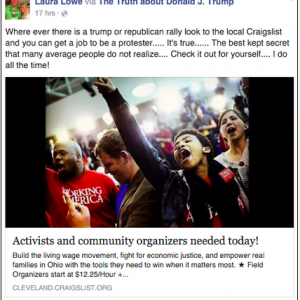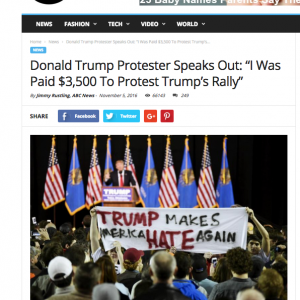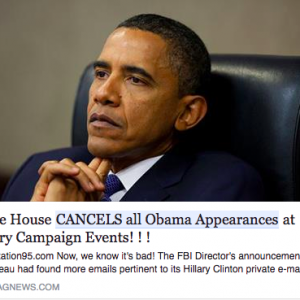This is part three of our paramedia series, which examines the role fake news and rumors played in the presidential election. Read the whole series here.
aNewDomain — The first person to master the new media wins the election.
— The first person to master the new media wins the election.
John F. Kennedy was our first photogenic president, moving us into the television age.
Barack Obama utilized social media to build a coalition and to raise funds.
And our next US president, Donald J. Trump, understands the media of the modern age better than anyone.
How did Trump win, you wonder? Simple. He is the master of fake news and innuendo.
That’s why Trump’s vote share seemed to increase with every crazy thing he said and every false news story he repeate d.
d.
You see, Trump is an internet troll. Internet trolls don’t, as a rule, give accurate information and informed dialogue. They just incite outrage and ride that wave into fame.
Think of the guy who asserted that Starbucks put a Satanist symbol on their holiday cups Or the guy who thinks the Denver International Airport is full of penises. Or anyone who was ever on History Channel H2.
In the age of reality television and boutique news, that’s how you get famous and stay that way. There’s no fact checking. Facts are of no import. Feelings matter.
And on polling day, Trump is the most famous person. Famous, infamous, it’s all the same.
Do Twitter and Facebook share some culpability in this?
Yes, of course.
Facebook in particular tolerates a lot of fake news. News feeds are tailored to the preferences of the user. If you click on a lot of right-oriented articles, you get more of them. This cycle, we have seen the rise of “shitposting:” proliferating false information and fake news that’s tailor-made for consumers to drive opinions to further extremes.
There are hundreds of these sorts of meme-mills, many of them overseas. 
The news today follows a cycle. Even respected news organizations need to make money and that means keeping you interested.
Every time Trump spoke, it was broadcast everywhere in the hopes of some red meat – and he rarely disappointed. Those outrageous soundbites bought him a lot of free airtime.
And the networks invested a lot in talking heads – in bringing in “surrogates,” people being paid both by the news show and the political campaigns, to have fact-check-free shouting matches with the hosts or one another.
It is possible to make a case that the Tea Party was brought to us by Fox News. Before they got national attention by adoring Fox hosts, they were just a few tricorner had enthusiasts re-enacting the signing of the Declaration of Independence.
Then they were thrown into the limelight and made a political institution. We are still feeling the ramifications.
It is equally possible to make the case that the media brought us Donald J. Trump, 45th president of the United State of America.
What are we going to do in this new environment where news is not responsible, where fake news dominates, where nobody checks it for facts?
What are we to do with conservative sites that clone real fact-checking sites but reach opposite conclusions?
When our nation was blueprinted, central to the design was the idea that democracy only works when people are informed.
We’ve been struggling with Fox News for 20 years now, previously our primary source of disinformation and misinformation.
No, the clamor of false statements is so loud it is getting hard to tell real news from fake news.
For aNewDomain, I’m Jason Dias.
Cover image: ThatsFake.com, All Rights Reserved. Images of fake news headlines throughout the presidential campaign: Screenshots by Gina Smith for aNewDomain.













